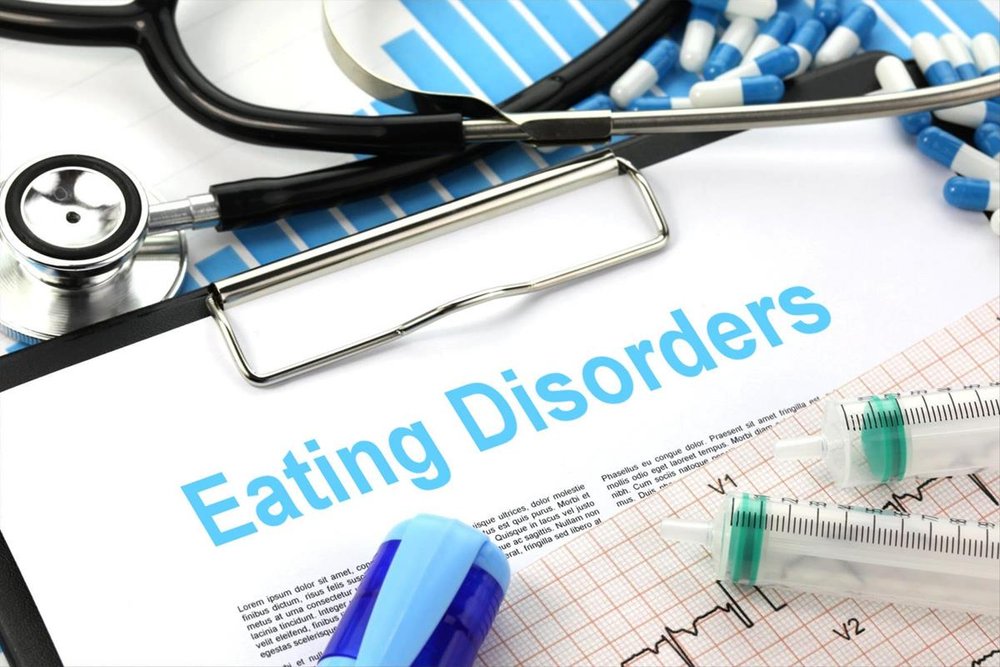When Hannah was 7 years old, she told her parents she didn’t want to be afraid of food anymore.
She had stopped wanting to go to Girl Scouts, birthday parties, restaurants, family celebrations and even the dinner table. Food was everywhere, and it gave her a lot of anxiety, said her mom, Michelle, who is not sharing their last name for Hannah’s safety.
Michelle first saw it when she tried to switch baby Hannah from formula to milk and solids— but Hannah refused. Often, she would pucker her lips shut or spit out the food she was given.
As she got older, Hannah had a list of about five foods she would eat, and they were specific. Like the green sour cream and onion Pringles, but only the small packs, not the big container, Michelle said.
Now 8 years old, Hannah is being treated for Avoidant/Restrictive Food Intake Disorder, or ARFID. Unlike eating disorders like anorexia or bulimia nervosa, this diagnosis isn’t concerned with body shape or size, said Kate Dansie, clinical director of the Eating Disorder Center in Rockville, Maryland.
Instead, people with ARFID are very limited in the foods they feel safe and comfortable eating, Dansie said. Unlike just being “picky,” this disorder can be debilitating and cause long-term health problems.
Instead, people with ARFID are very limited in the foods they feel safe and comfortable eating, Dansie said. Unlike just being “picky,” this disorder can be debilitating and cause long-term health problems.

In some cases, people with ARFID have had a traumatic experience with food, like choking, which induces a greater vigilance with eating, Murray said. Other times, people with this condition don’t seem to have a low drive to eat and high anxiety around food, he said./Union Square Practice
What is ARFID?
Rather than restricting their calories or nutritional content, people with ARFID often limit their food by sensory or textural preferences, Murray said.
“This is where a person will usually restrict the variety and volume of food because they have incredibly debilitating beliefs about the composition of the food,” he added. “Examples can be not eating any foods that are a certain texture, a certain smell, a certain flavor, even a certain brand of a food.”
In some cases, people with ARFID have had a traumatic experience with food, like choking, which induces a greater vigilance with eating, Murray said. Other times, people with this condition don’t seem to have a low drive to eat and high anxiety around food, he said.
A rigid or fearful of change personality type may also contribute to ARFID symptoms, Murray said.
What you can do
Although there is much researchers still need to learn about ARFID, there are resources available, Murray said.
“The first thing we should know is early intervention is better because the list of avoided foods can grow exponentially,” he said.
There isn’t much data on if medication is helpful, but therapy – including cognitive behavioral therapy or CBT – has helped many people.
Therapy for ARFID “usually involves a guided exposure to foods so that one can relearn associations with those foods and ultimately not avoid them,” Murray said.
At home, there are things families can do to better support a child with ARFID, like prioritizing making sure the child gets enough calories before focusing on expanding variety, said Dr. Nicole Stettler, clinical executive director of Eating Disorder Recovery Services at Rogers Behavioral Health.
You can also give your child tools like timers or visual reminders to eat, and try “food chaining,” which is a strategy that combines new foods with ones they already know they like, she said.
As family and caretakers of someone with ARFID, it is important to remember that they aren’t trying to be difficult – although it can be frustrating to feel like the stars have to align for a mealtime to go smoothly, Murray added.

At home, there are things families can do to better support a child with ARFID, like prioritizing making sure the child gets enough calories before focusing on expanding variety, said Dr. Nicole Stettler, clinical executive director of Eating Disorder Recovery Services at Rogers Behavioral Health./Flickr
“It’s really, really frustrating, because most of the time the stars don’t align, and I don’t know the formula to get him or her to eat,” he said. However, it is “really damaging for any child with any psychiatric disorder if they feel punished because of it, so it’s really important to not punish and adopt a supportive stance among parents.”
Five months into her treatment, Hannah pushing herself to try new things often and to take three bites to give it a full chance, Michelle said.
Her confidence has grown, she is getting more curious, and her list of “safe foods” has increased by 11, she said.
“Our goal is to get her to a good place … so that as she gets older, she’ll have the tools that she needs,” Michelle said.






